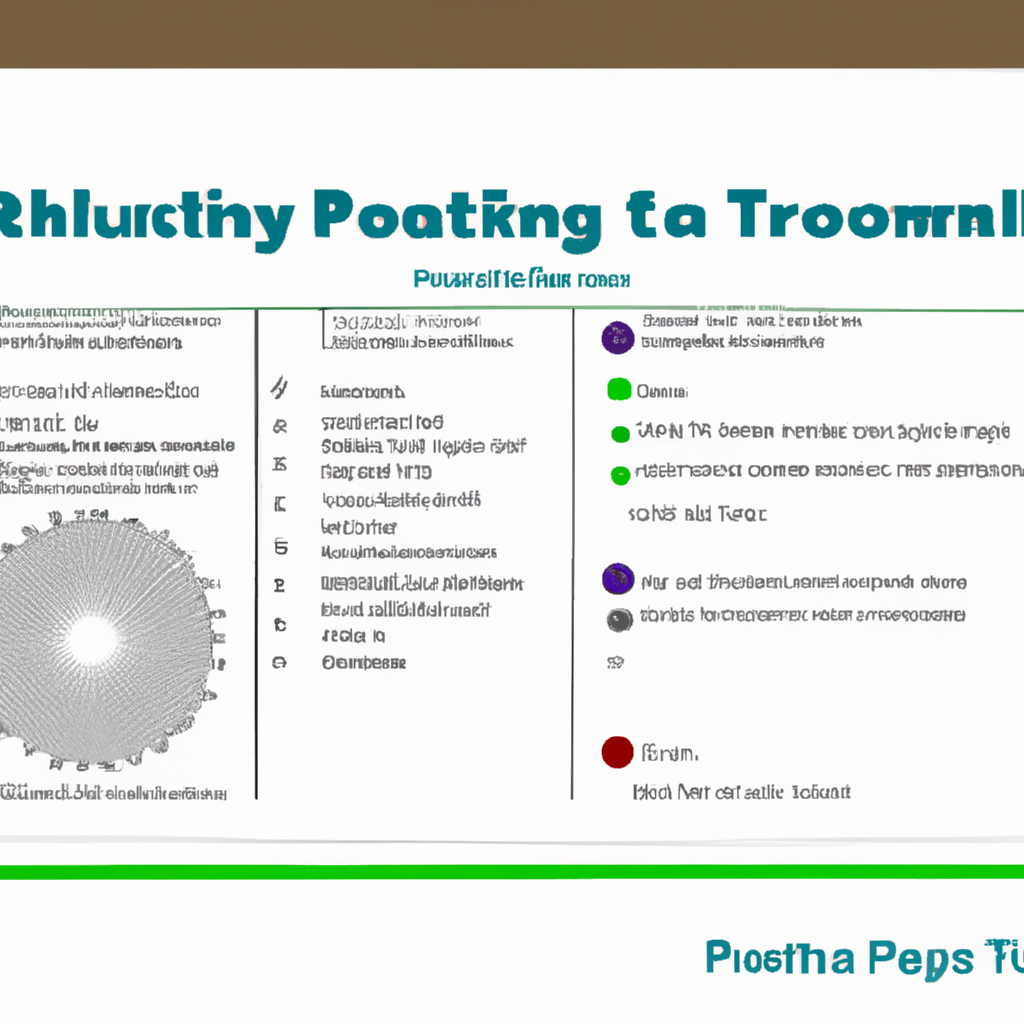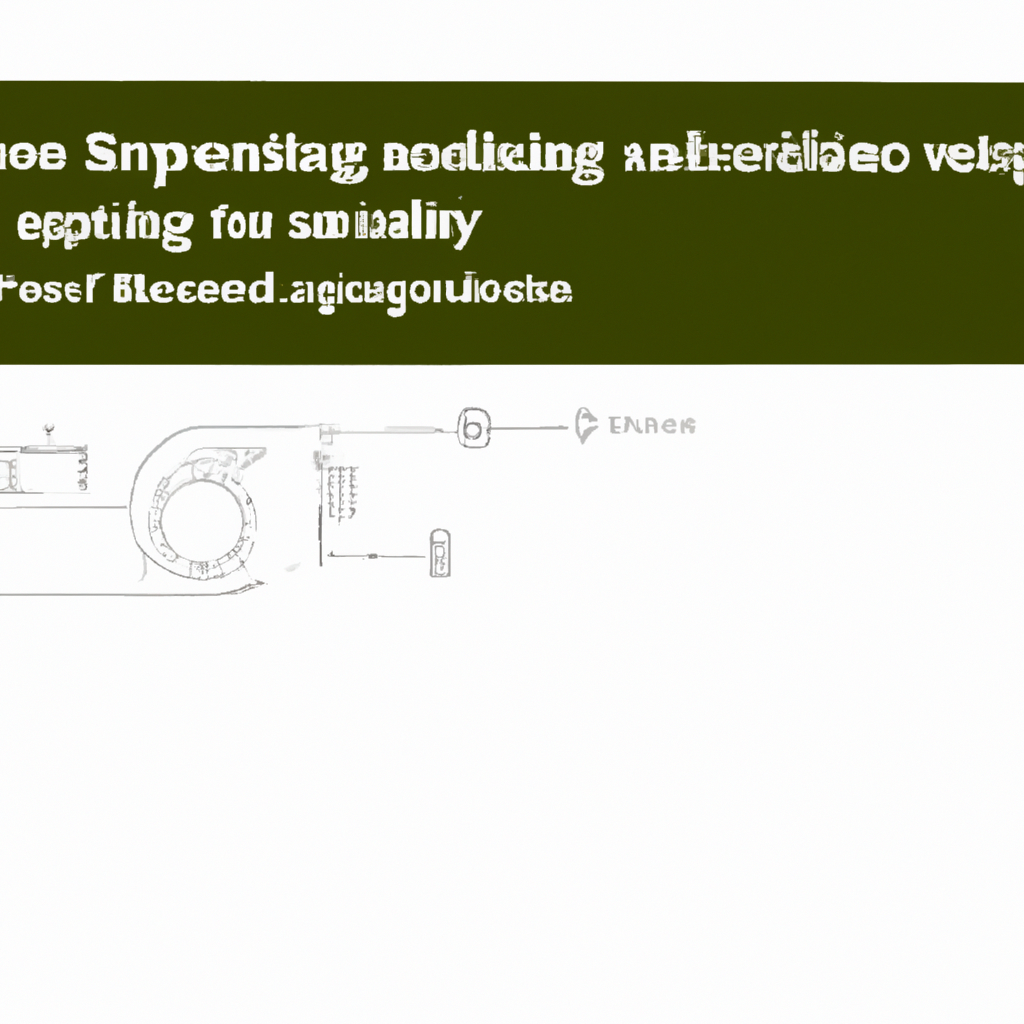Have you ever found yourself struggling with the settings on your Earthway spreader? Don’t worry, you’re not alone. In this article, we will explore some of the most common issues people face when using Earthway spreaders and provide simple solutions to help you get the most out of your equipment. From uneven distribution to clogging problems, we’ve got you covered. So, let’s dig in and troubleshoot those spreader settings together!
1. Spreader Not Distributing Fertilizer Evenly
1.1 Uneven Spreader Settings
One common issue that may cause your spreader to not distribute fertilizer evenly is uneven spreader settings. If the spreader settings are not calibrated properly, it can result in uneven distribution of the fertilizer. To fix this issue, you need to ensure that the spreader settings are set according to the manufacturer’s guidelines. It is important to refer to the spreader calibration chart provided by Earthway or consult the product manual to determine the correct settings for your specific fertilizer.
1.2 Clogged or Damaged Discharge Opening
Another factor that can lead to uneven distribution is a clogged or damaged discharge opening. Over time, debris or fertilizer particles may accumulate in the discharge opening, causing blockage and hindering the uniform flow of the fertilizer. Regular maintenance is essential to prevent this issue. Clean the discharge opening with a brush or a small tool to remove any obstructions. In case of any damage, consider replacing the discharge opening to ensure proper functioning of the spreader.
1.3 Incorrect Fertilizer Consistency
The consistency or granule size of the fertilizer being used can also affect the even distribution. If the fertilizer is clumpy or contains large granules, it may not flow smoothly through the spreader, resulting in uneven application. It is important to choose fertilizer with a consistent granule size and ensure it is well-suited for your spreader. If clumps are present, break them up before loading the fertilizer into the spreader to improve the consistency of the application.
1.4 Wind Conditions
Wind conditions can significantly impact the spread pattern of the fertilizer. Strong gusts of wind can cause the particles to drift away from the intended target area, resulting in uneven distribution. As a general rule, it is advisable to avoid spreading fertilizer on windy days. If it is unavoidable, consider applying the fertilizer in a way that works with the wind direction, ensuring that the majority of the granules are carried towards the desired area.
1.5 Worn-Out Spreader Parts
Over time, certain components of the spreader may wear out, which can affect the uniformity of fertilizer distribution. Check for signs of worn-out parts such as damaged spinner plates or worn-out agitators. If you notice any issues, consider replacing the worn-out parts to restore the proper functioning of the spreader. Regular inspection and maintenance of the spreader can help identify and address potential issues before they escalate.
2. Spreader Dispensing Too Much Fertilizer
2.1 Incorrect Spreader Dial Setting
If your spreader is dispensing too much fertilizer, the issue might lie in the incorrect spreader dial setting. The spreader dial allows you to control the rate at which the fertilizer is dispensed. Check the dial setting and ensure that it is adjusted properly according to the recommended rate for your specific fertilizer. Refer to the product manual or the spreader calibration chart to determine the appropriate dial setting. By adjusting the spreader dial correctly, you can ensure that the spreader dispenses the desired amount of fertilizer.
2.2 Spreader Calibration Issues
Proper calibration of the spreader is essential for accurate fertilizer application. Calibration refers to the process of adjusting the spreader to deliver the correct amount of fertilizer per unit area. If your spreader is dispensing too much fertilizer, it may be due to incorrect calibration. Follow the calibration instructions provided by Earthway or consult the product manual to calibrate your spreader accurately. Regular calibration ensures precise application and minimizes waste.
2.3 Faulty Spreader Deflector
The spreader deflector is responsible for directing the fertilizer particles in a specific pattern. If the deflector is faulty or misaligned, it can lead to excessive fertilizer dispersal. Inspect the deflector for any damage or misalignment. If necessary, realign or replace the deflector to restore accurate distribution of the fertilizer. Regularly cleaning the deflector and checking for any obstructions can also help prevent issues with excessive fertilizer dispension.
2.4 Uneven Ground Surface
Uneven ground surfaces can contribute to excessive fertilizer dispensing. When the spreader is operated on uneven terrain, it can cause the fertilizer to accumulate in certain areas, resulting in overapplication. If you notice this issue, try to level the ground as much as possible before spreading the fertilizer. Additionally, adjusting the walking speed and taking slower steps can help ensure a more even application, particularly on uneven surfaces.

3. Spreader Not Dispensing Enough Fertilizer
3.1 Insufficient Spreader Dial Setting
If your spreader is not dispensing enough fertilizer, the first thing to check is the spreader dial setting. The spreader dial allows you to adjust the rate at which the fertilizer is dispensed. Ensure that the dial setting is appropriate for the desired application rate of your fertilizer. Consult the product manual or the spreader calibration chart to determine the correct dial setting. By increasing the spreader dial setting, you can ensure that the spreader dispenses the desired amount of fertilizer.
3.2 Debris Blockage
Obstructions or debris in the spreader can prevent the fertilizer from flowing freely, resulting in insufficient dispensing. Before loading the fertilizer, inspect the spreader for any debris or obstructions that may be blocking the flow. Clear any blockages, such as compacted fertilizer or debris accumulation, from the feed gate or discharge opening. Regularly cleaning the spreader and removing debris can help prevent clogging and ensure proper fertilization.
3.3 Spreader Feed Gate Adjustment
The feed gate controls the flow of fertilizer from the hopper to the spreading mechanism. If the feed gate is not adjusted correctly, it can restrict the flow, leading to insufficient fertilization. Make sure the feed gate is fully open and not obstructed by fertilizer or debris. Refer to the product manual for specific instructions on adjusting the feed gate to ensure that the spreader dispenses the appropriate amount of fertilizer.
4. Inconsistent Spreader Pattern
4.1 Uneven Ground Speed
The speed at which you walk or operate the spreader can affect the spread pattern. Inconsistent ground speed can result in an uneven distribution of the fertilizer. To achieve a consistent spread pattern, maintain a steady and uniform walking speed while operating the spreader. This will ensure a more even application and prevent areas of over or under fertilization.
4.2 Uneven Hand Movement
In addition to ground speed, uneven hand movement can also contribute to an inconsistent spreader pattern. It is important to maintain a steady and controlled hand movement throughout the spreading process. Avoid sudden jerks or abrupt changes in direction, as this can disrupt the even distribution of the fertilizer. Practice a smooth and fluid motion to achieve a consistent spread pattern.
4.3 Worn-Out Spreader Parts
Worn-out spreader parts can also cause an inconsistent spread pattern. Check for signs of wear or damage, particularly in components like the spinner plate or agitator. If you notice any issues, such as irregular rotation or worn-out edges, consider replacing the worn-out parts. Regular maintenance and inspection of the spreader can help prevent inconsistencies in the spread pattern.

5. Difficulty Adjusting Spreader Settings
5.1 Stiff or Loose Spreader Dial
If you’re experiencing difficulty adjusting the spreader settings, it may be due to a stiff or loose spreader dial. A stiff dial can make it challenging to turn the dial smoothly, while a loose dial can result in inaccurate adjustments. If your dial feels stiff, consider lubricating it with a suitable lubricant to improve its functionality. On the other hand, if the dial is loose, adjust or tighten any screws or fasteners to ensure a secure fit. A properly functioning spreader dial makes it easier to adjust and maintain the desired spreader settings.
5.2 Incorrect Spreader Number Scale
Sometimes, the spreader number scale may be inaccurate or not aligned properly with the spreader settings. This can create confusion and make it challenging to adjust the settings accurately. If you suspect an issue with the number scale, use the spreader calibration chart or refer to the product manual to determine the correct settings for your desired fertilizer application rate. By cross-referencing the scale with the recommended settings, you can ensure accurate adjustments.
5.3 Spreader Setting Knob Dysfunction
If the spreader setting knob is not functioning properly, it can be difficult to adjust the spreader settings accurately. Inspect the knob for any signs of damage or stiffness. If necessary, lubricate the knob or consider replacing it to ensure smoother operation. A functional spreader setting knob is essential for easy and accurate adjustments, allowing you to achieve the desired fertilizer application rate.
6. Spreader Not Spreading Far Enough
6.1 Low Spreader Deflector Angle
If you find that your spreader is not spreading the fertilizer far enough, it may be due to a low deflector angle. The deflector controls the direction and range of the spread, and if it is set too low, the fertilizer will not be dispersed as far as desired. Adjust the deflector to a higher angle to increase the spread range. Refer to the product manual for specific instructions on adjusting the deflector to achieve the desired spread distance.
6.2 Worn-Out Spreader Parts
Worn-out parts in the spreader can also lead to inadequate spread distance. Check for any signs of wear or damage, particularly in components like the deflector or spinner plate. Replace any worn-out parts to ensure optimal spread distance. Regular maintenance and replacement of worn components can help maintain the efficiency and performance of the spreader.
6.3 Inadequate Walking Speed
The speed at which you walk while operating the spreader can affect the spread distance. If you walk too quickly, the spread pattern may become narrower, resulting in inadequate spread distance. To ensure the fertilizer reaches the desired areas, maintain a steady and moderate walking speed when operating the spreader. Practice a comfortable speed to achieve the optimum spread distance.

7. Spreader Jamming or Stopping
7.1 Debris or Fertilizer Build-Up
One common cause of spreader jamming or stopping is the build-up of debris or fertilizer within the spreader mechanism. Over time, particles can accumulate and cause blockages, hindering the smooth flow of fertilizer. Regular cleaning and maintenance is crucial to prevent this issue. Clean the spreader thoroughly after each use, removing any accumulated debris or fertilizer residue. This will help ensure uninterrupted operation of the spreader.
7.2 Damaged or Bent Spreader Parts
Spreader jamming or stopping can also occur if certain parts of the spreader are damaged or bent. Inspect the spreader components, such as the spinner plate or the feed gate, for any signs of damage. If you notice any issues, consider replacing the damaged parts to restore proper functionality and prevent future jamming or stopping.
7.3 Insufficient Lubrication
Lack of lubrication can contribute to the spreader jamming or stopping. Over time, the moving parts of the spreader may require lubrication to ensure smooth operation. Check the spreader’s moving parts, such as the agitator or gears, and apply a suitable lubricant if necessary. Regular lubrication can help prevent friction and ensure the spreader operates smoothly without jamming or stopping.
8. Unwanted Fertilizer Spreading on Non-Target Areas
8.1 Incorrect Spreader Dial Setting
If your spreader is spreading fertilizer on non-target areas, it may be due to an incorrect spreader dial setting. Ensure that the dial is set to the desired application rate for your specific fertilizer. Consult the product manual or the spreader calibration chart to determine the appropriate dial setting. By adjusting the spreader dial correctly, you can focus the fertilizer application on the intended target areas and minimize any unwanted spread.
8.2 Wind Conditions
Wind conditions can cause the fertilizer particles to drift away from the intended target areas, resulting in unwanted spreading. Avoid spreading fertilizer on windy days if possible. If you must spread on a windy day, adjust the spreading technique accordingly. Consider spreading in the direction opposite to the wind to minimize drift. Additionally, be mindful of nearby non-target areas and adjust the walking speed to ensure more precise application.
8.3 Spreader Deflector Misalignment
A misaligned deflector can also lead to unwanted fertilizer spreading on non-target areas. Inspect the deflector and ensure it is correctly aligned and secured. If necessary, realign or adjust the deflector to direct the spread pattern accurately towards the intended areas. A properly aligned deflector helps prevent any unnecessary spread and ensures the fertilizer is applied where it is intended.

9. Spreader Handle or Controls Not Functioning Properly
9.1 Loose or Detached Handle
If the spreader handle feels loose or detached, it can significantly affect the control and maneuverability of the spreader. Check the handle and fasteners for any signs of looseness or damage. If necessary, tighten or replace any loose or missing fasteners. A secure and properly attached handle allows for comfortable operation and better control of the spreader.
9.2 Malfunctioning Control Cables
Control cables play a vital role in operating the spreader, and any malfunction can impact the functionality of the spreader handle or controls. Inspect the control cables for any signs of damage or wear. If you notice any issues, consider replacing the damaged cables to ensure smooth operation. Regular inspection of the control cables can help identify any potential problems and address them promptly.
9.3 Broken or Stuck Control Mechanism
The control mechanism of the spreader, such as the handle release or dial adjustment, can become broken or stuck over time. Inspect the control mechanisms for any signs of damage or obstructions. If necessary, repair or replace the broken or stuck parts to restore the proper functioning of the spreader handle or controls. Regular maintenance and lubrication of the control mechanisms can help prevent issues and ensure smooth operation.
10. Spreader Discharge Opening Blocking
10.1 Debris or Fertilizer Clogging
Debris or fertilizer particles can clog the discharge opening, blocking the flow of the fertilizer. Regular cleaning and maintenance are crucial to prevent this issue. Inspect the discharge opening and remove any accumulated debris or fertilizer residue. A brush or a small tool can be used to clear any obstructions. Regularly cleaning the discharge opening will help ensure uninterrupted flow of the fertilizer.
10.2 Incorrect Spreader Feed Gate Adjustment
The feed gate controls the flow of the fertilizer from the hopper to the discharge opening. An incorrect feed gate adjustment can result in the discharge opening being blocked or insufficiently opened. Check the feed gate positioning and ensure it is properly adjusted to allow for a smooth and even flow of the fertilizer. Refer to the product manual for specific instructions on adjusting the feed gate to prevent blockage of the discharge opening.
10.3 Damaged or Warped Discharge Opening
Damage or warping of the discharge opening can hinder the flow of the fertilizer and cause blockages. Inspect the discharge opening for any signs of damage or warping. If you notice any issues, consider replacing the damaged or warped parts to restore the proper functionality of the spreader. Regular maintenance and inspection of the discharge opening will help identify any potential problems and ensure smooth operation.

